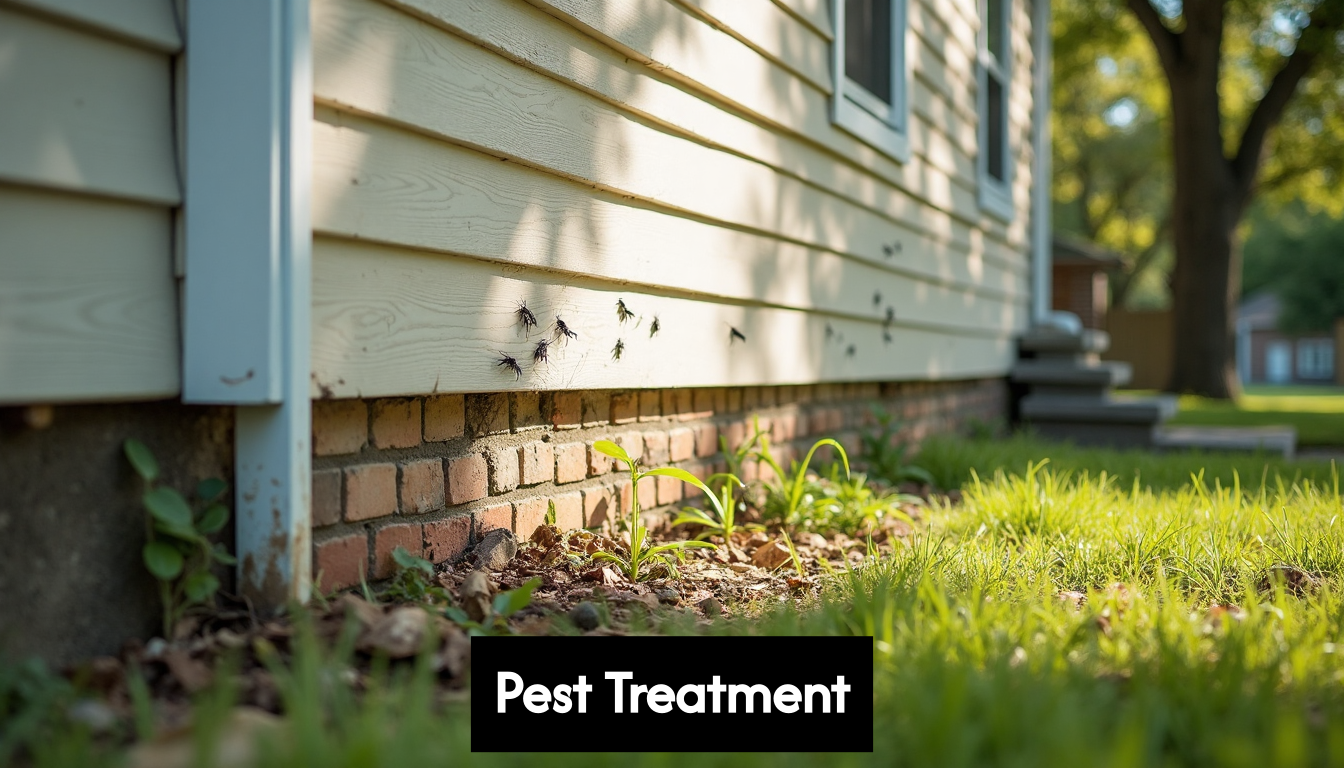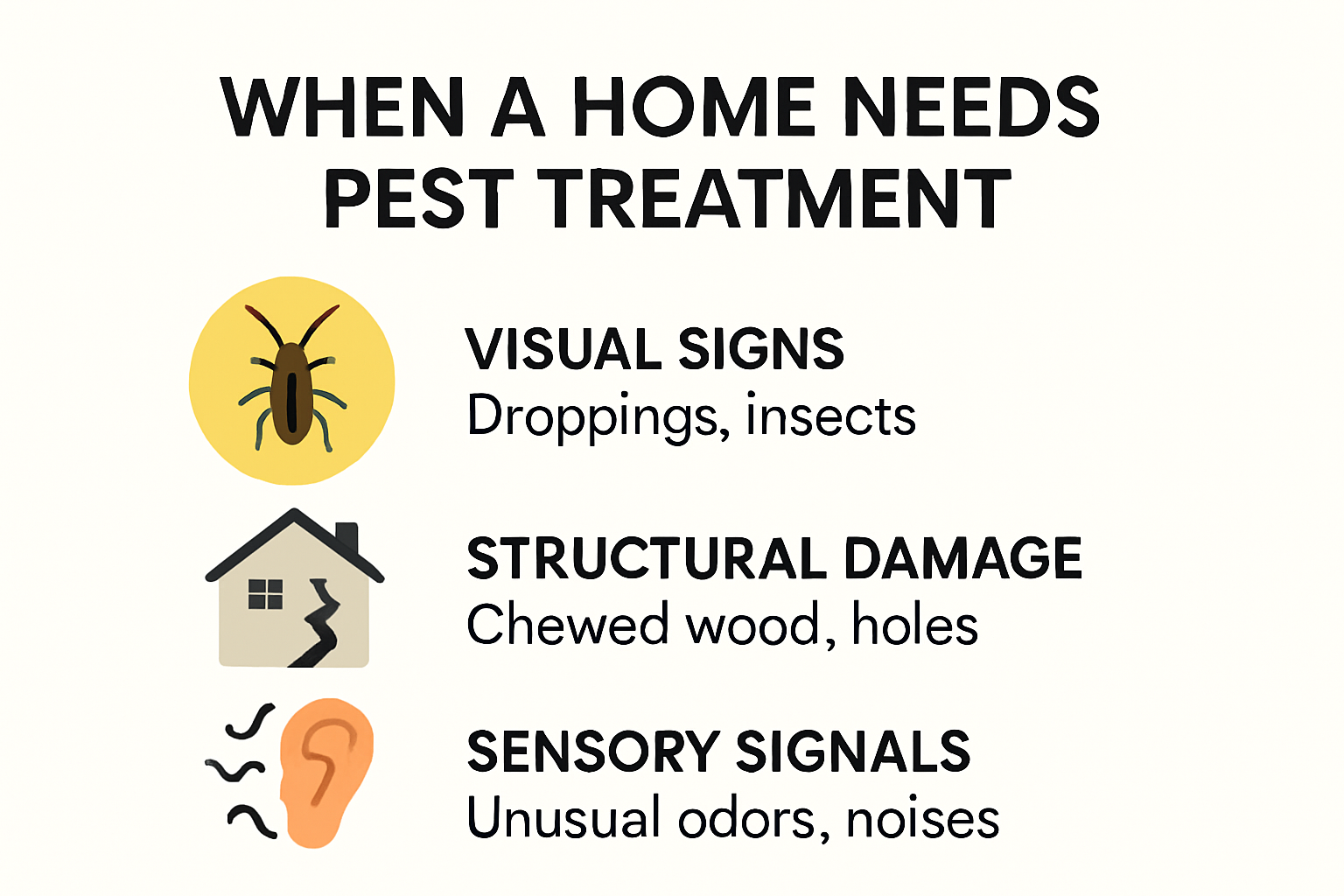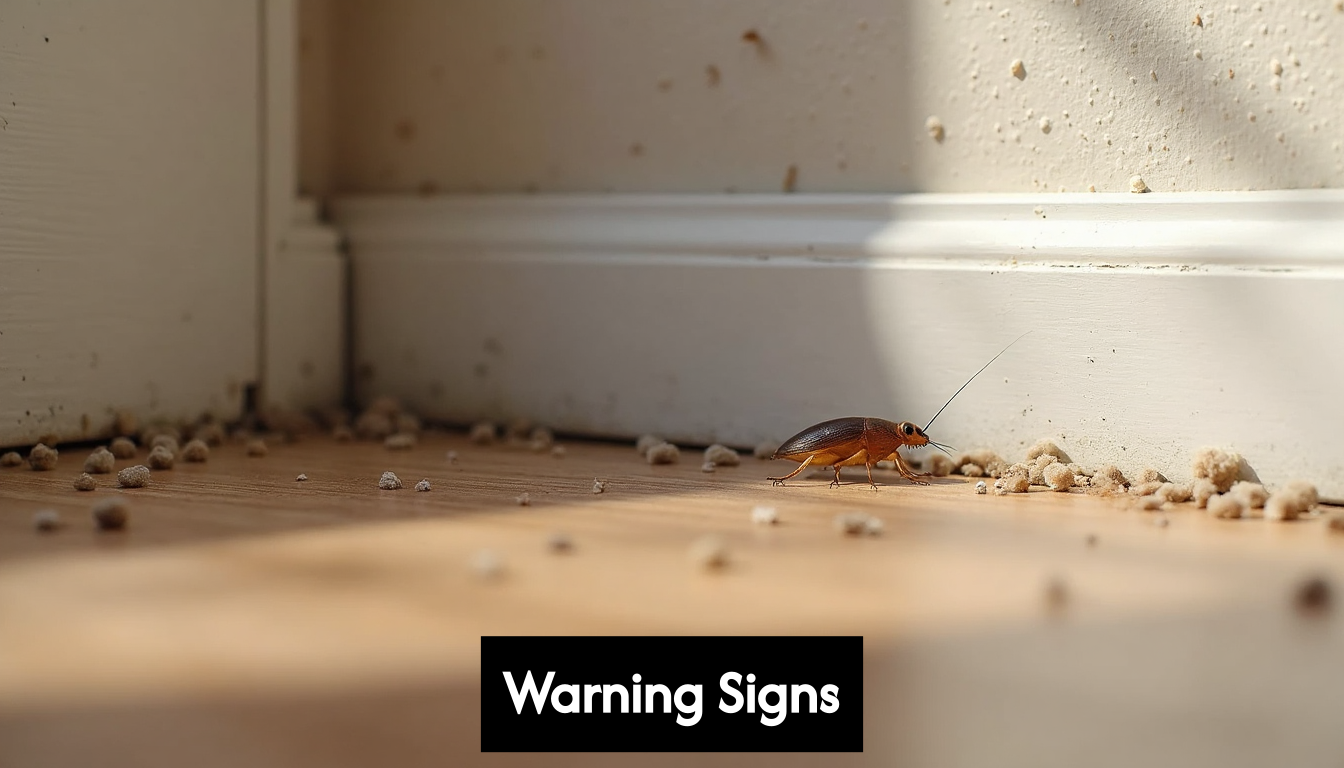
Pest problems in Texas are more than just annoying. They can cause chaos behind your walls and under your floors before you ever see a single bug. Here is something not many homeowners realize. Termite damage alone costs Texas residents an estimated $2.2 billion every year, and most of the destruction happens long before it’s visible. It is not the obvious cockroach scamper or the mouse scratching in the attic that should worry you most. The real danger is how quickly these issues can escalate into massive repairs and health risks if you wait too long to act. Curious what subtle signals you might be missing? Time to look closer.
| Takeaway | Explanation |
|---|---|
| Recognize warning signs of infestations | Homeowners should look for visual indicators like droppings, visible insects, and structural damage to identify potential pest problems early. |
| Understand the importance of professional pest control | DIY methods often fail to address complete infestations; hiring professionals ensures comprehensive treatment and long-term prevention strategies. |
| Act quickly to avoid financial loss | Delayed treatment can escalate minor pest issues into major structural damage; swift action helps save money and property from costly repairs. |
| Utilize seasonal awareness for pest management | Texas homeowners should adapt pest management strategies based on seasonal pest population shifts to proactively address potential infestations. |
| Implement regular inspections and preventative measures | Routine professional inspections are key to identifying entry points and potential pest threats before they develop into significant problems. |
Pest infestations can quickly transform from a minor nuisance to a significant home maintenance nightmare. Texas homeowners need to recognize the subtle and not so subtle indicators that unwelcome guests have taken up residence in their living spaces. Understanding these warning signs can mean the difference between a simple treatment and extensive property damage.

The most immediate signs of pest problems are visual indicators that something is not right in your home. Droppings are a telltale signal of rodent or insect activity. Small dark pellets near kitchen cabinets, in pantries, or along baseboards suggest mice, rats, or cockroaches have established a presence. According to pest control experts, even a few droppings can indicate a larger population hiding just out of sight.
Visible insects themselves represent another critical warning. Ants marching in organized lines, cockroaches scurrying when lights turn on, or spider webs in corners are clear indications that pests have made your home their habitat. Pay special attention to areas with moisture or food sources like kitchens, bathrooms, and storage spaces.
Pests do more than just inhabit spaces they actively destroy them. Gnaw marks on wooden structures, electrical wiring, or food packaging are significant red flags. Rodents constantly need to chew to keep their teeth from growing too long, which means your home becomes their personal chewing playground. Small holes in walls, unexplained wood shavings, or chewed cardboard boxes suggest an active rodent population.
Wood damage specifically can indicate termite activity. Look for mud tubes along foundation walls, hollow sounds when tapping wooden structures, or discarded termite wings near windowsills. Research shows that untreated termite infestations can cause significant structural damage, potentially costing homeowners thousands in repairs.

Not all pest signs are visual. Scratching sounds within walls, especially during quiet nighttime hours, often indicate rodent movement. Mice and rats create nests in wall cavities, attics, and crawl spaces. These sounds might be accompanied by a musty odor or unexplained rustling noises.
Allergic reactions or unexplained skin irritations can also suggest pest problems. Bed bug infestations often result in small, itchy bite marks. Cockroach presence can trigger asthma or allergic responses in sensitive individuals. Our comprehensive pest control guide offers more insights into recognizing these subtle warning signs.
Quick action is crucial when these indicators appear. The longer pests remain unaddressed, the more challenging and expensive treatment becomes. Texas homeowners should conduct regular home inspections, maintain cleanliness, and contact professional pest control services at the first sign of potential infestation.
Texas presents a unique landscape of pest challenges that demand specialized understanding and proactive management. The state’s diverse climate and geographical variations create perfect breeding grounds for multiple pest species that pose significant risks to residential and commercial properties.
Termites represent a particularly devastating economic threat in Texas. Research from Texas A&M AgriLife Extension reveals that termite damage costs Texas homeowners an estimated $2.2 billion annually. These wood destroying insects can compromise structural integrity silently and rapidly, with subterranean and drywood termite species prevalent throughout the state.
Beyond termites, Texas faces substantial agricultural pest challenges. Grasshoppers, fire ants, and crop-destroying beetles cause millions in agricultural damages each year. These insects not only threaten farm revenues but can also disrupt local ecosystems and introduce complex management challenges for rural and suburban landowners.
Texas experiences dramatic seasonal shifts in pest populations that require strategic intervention. Seasonal data indicates indoor pest activity increases by approximately 25% during winter months, with bed bug treatments typically spiking 15-20% during this season. This surge means homeowners and businesses must adapt their pest management strategies throughout the year.
Winter months see rodents seeking indoor warmth, while summer brings increased insect activity. Scorpions become more active in hot regions like Central and West Texas, presenting unique risks to residential areas. Mosquito populations explode during humid spring and summer months, carrying potential health risks beyond simple nuisance.
Pest infestations extend far beyond property damage into serious public health concerns. Restaurants, healthcare facilities, and educational institutions face heightened risks from pest related health hazards. Cockroaches can spread numerous pathogens, while rodents potentially introduce diseases like hantavirus and leptospirosis.
Commercial entities face additional challenges including potential business interruption, regulatory penalties, and reputation damage from visible pest problems. A single health inspection failure due to pest issues can result in significant financial and operational consequences. Businesses must implement comprehensive pest management protocols that go beyond reactive treatments.
Understanding these specific Texas pest risks requires a multifaceted approach. Homeowners and business owners must combine regular professional inspections, preventative maintenance, and targeted treatment strategies to effectively mitigate potential damages. Our strategic pest control guide provides deeper insights into managing these complex regional challenges.
Homeowners often begin pest management with well-intentioned do-it-yourself strategies, but recognizing when professional intervention becomes necessary can save significant time, money, and property damage. Understanding the limitations of home treatments and the value of expert pest control is crucial for effective pest management.
Do-it-yourself pest control methods frequently fall short of comprehensive solutions. Over-the-counter treatments typically address surface-level infestations without targeting underlying structural issues or complete pest populations. Research on DIY pest control effectiveness reveals that most homeowners underestimate the complexity of pest ecosystems within their properties.
Common DIY pitfalls include incomplete treatment coverage, incorrect chemical applications, and failure to identify root causes of infestations. Household sprays and traps might temporarily reduce visible pest numbers but rarely eliminate entire populations. Some pest species, like termites and bed bugs, require specialized treatment protocols that generic consumer products cannot effectively address.
Market insights show the professional pest control market was valued at approximately $24.9 billion in 2023, reflecting growing recognition of specialized intervention. Professional exterminators bring critical advantages including comprehensive property assessments, targeted treatment strategies, and long-term prevention plans.
Trained technicians utilize advanced diagnostic tools to identify precise pest species, understand migration patterns, and develop customized elimination strategies. They access professional-grade treatments unavailable to consumers, ensuring more thorough and lasting results. Moreover, professionals can identify potential structural vulnerabilities that might attract future infestations, providing holistic property protection.
Knowing when to transition from DIY efforts to professional services is key. Experts recommend immediate professional consultation if DIY treatments fail to control pest populations within two weeks, or if you observe extensive property damage, recurring infestations, or potential health risks.
Certain situations demand immediate professional attention. Significant termite activity, widespread rodent populations, or aggressive bed bug infestations require specialized treatment. Homeowners should also consider professional services when dealing with potentially dangerous pests like venomous spiders, aggressive wasps, or disease-carrying rodents.
Our comprehensive pest control guide provides additional insights into making informed decisions about pest management. Professional intervention represents an investment in property protection, health safety, and long-term peace of mind. Recognizing the limitations of home treatments and embracing expert solutions can transform pest challenges from ongoing frustrations into manageable, resolvable issues.
Pest infestations represent more than just a nuisance they are potential financial catastrophes waiting to unfold. Swift, strategic intervention can mean the difference between minor treatment costs and devastating property damage. Understanding the economic implications of rapid pest management is crucial for Texas homeowners and businesses.
Market research reveals that Americans spend approximately $575 per year on pest control services, with a one-time annual visit typically costing between $250 and $600. These figures might seem significant, but they pale in comparison to the potential repair and structural restoration expenses resulting from prolonged pest infestations.
Termite damage alone can cost homeowners thousands of dollars in repairs. A small, undetected termite colony can compromise wooden structures, electrical systems, and foundational elements. Within months, what begins as a minor issue can transform into a major structural threat requiring extensive reconstruction. Professional early detection and treatment can prevent these escalating costs, offering a critical financial safeguard for property owners.
Global market projections indicate the pest control market is expected to grow from $24.71 billion in 2024 to $26.81 billion in 2025. This growth reflects an increasing understanding of pest management as a proactive investment rather than a reactive expense. Emerging technologies like AI-powered monitoring systems and automated pesticide application are revolutionizing how quickly and effectively pest threats can be identified and neutralized.
Smart pest control solutions now enable real-time tracking and immediate intervention. Automated traps and sensors can detect pest activity before visible damage occurs, allowing for precision targeting of specific pest populations. Innovative companies are developing AI-driven systems that can predict and prevent pest invasions, transforming pest control from a reactive to a predictive service.
Homeowners can implement several strategies to minimize potential pest-related financial risks. Regular professional inspections serve as an essential first line of defense. These assessments can identify potential entry points, moisture issues, and early signs of pest activity before they escalate into significant problems.
Insurance considerations also play a crucial role. Many homeowner insurance policies do not cover pest-related damage, making proactive prevention even more critical. Maintaining documented pest control records can potentially lower insurance premiums and provide evidence of responsible property maintenance.
Our comprehensive pest control guide offers additional insights into protecting your property investment. By treating pest management as a strategic financial decision rather than an occasional inconvenience, homeowners can safeguard their most valuable asset their home. Fast, professional action is not an expense it is a critical investment in long-term property preservation and financial stability.
Look for visual indicators such as droppings, visible insects, and structural damage. Noises like scratching in the walls, musty odors, and unexplained bite marks can also signal an infestation.
If DIY treatments fail within two weeks, or if you experience extensive property damage or health risks, it’s time to call a professional. Pests like termites and bed bugs often require specialized treatment.
Pests can cause significant financial loss due to structural damage and costly repairs. Termite damage alone can cost homeowners thousands of dollars in repairs, making swift action critical.
Regular professional inspections, maintaining cleanliness, sealing potential entry points, and addressing moisture issues are key strategies for preventing infestations and protecting your property.
Have you noticed droppings, gnaw marks or strange noises mentioned in our Texas Homeowner Guide? These are not just minor annoyances. They are red flags that your home could already be at risk for costly pest damage. Waiting can quickly turn a hidden issue into a major repair bill, especially with Texas termites and rodents that destroy silently. Protect your home and family from escalating infestations.

Schedule a thorough inspection with our family-owned team at Pestico today. Our local experts offer affordable and high-quality pest, termite, mosquito and rodent control services. Secure peace of mind for your loved ones and your biggest investment. Visit our site now and request your personalized pest control solution. Early action saves you money, property, and stress.